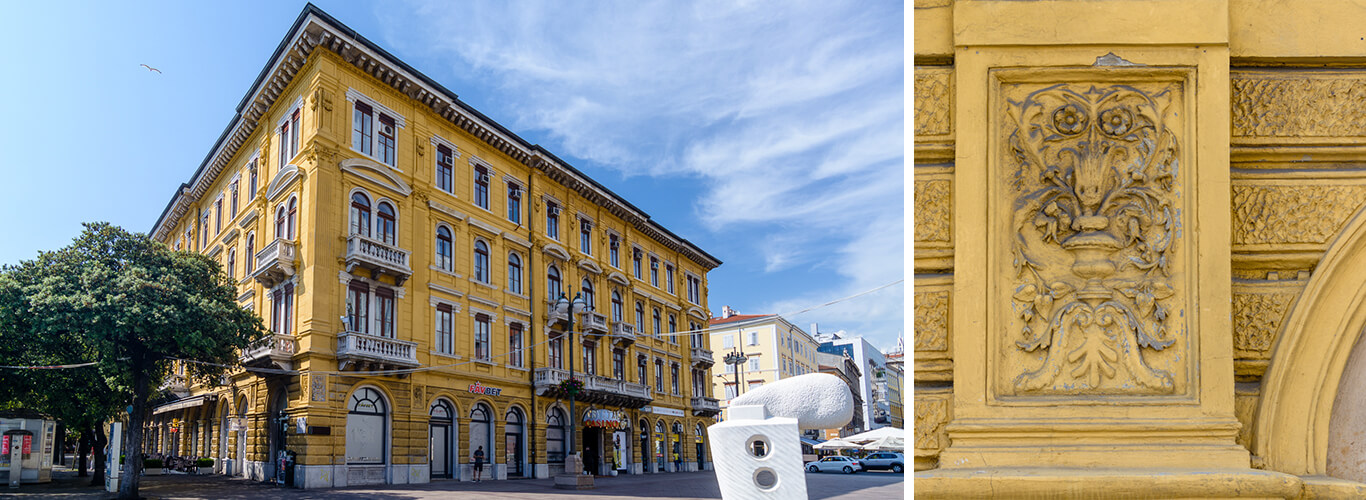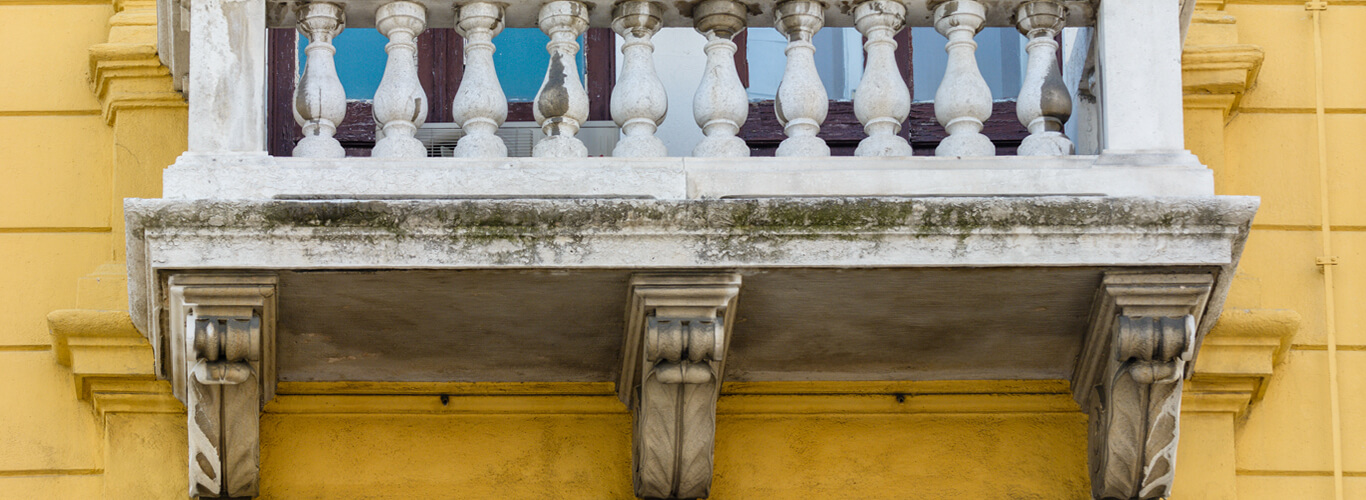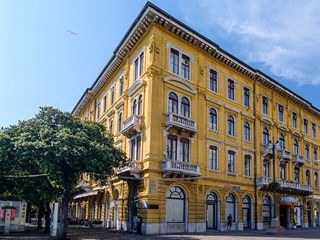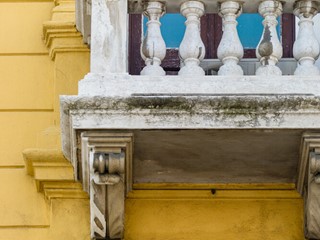Hotel Europa
address: 10 Riva StreetPeriod: Historicism
Kind: Immovable material heritage
Century: 19
Year: 1874
Purpose: public
The Hotel Europa was built in 1874 at the location of an older hotel. The project was realized according to the design by the Trieste architect Giuseppe Bruni, already famous for the construction of the palace Modello and the Municipium in Trieste. The works were commissioned by Josip Gorup.
With its representative façade in the late Renaissance style, the Hotel Europa carries the characteristics of the Venetian eclecticism by Giuseppe Bruni. During construction, Bruni considered its closeness to the sea and using his knowledge from the Venetian Academy, he created a façade which exquisitely flirts with its reflection in the sea, creating a perfect view, particularly attractive to the travellers from the sea. Corinthian pillars, fluted columns, rich ornaments and details on the balustrades and balcony consoles, as well as long arcade arches are some of the motifs taken over from the Venetian neoclassical architecture. The vertical façade was achieved by decomposing the pilasters and emphasizing the first floor, piano nobile.
The interior of the public space corresponds to its external form. The salon, situated on the first floor, is abundant with decorations from the façade and illustrations of illusionist landscape by Giovanni Fumi. This area served for numerous gatherings, festivities, balls and exhibitions. The Caffè Centrale on the ground floor, today altered, which used to be the centre of social events, has been preserved until today.
Subsequently, in 1898, according to the project by Emilio Ambrosini, a porch was constructed. Today this is the administrative building of the Primorsko-Goranska County, with numerous catering and commercial activities on the ground floor.
Gabriele D'Annunzio himself stayed at the hotel before conquering Rijeka. The hotel was also the seat for the Association of Free Spirits – Yoga whose activities related to discovering suspicious persons in D'Annunzo's company.
Valorization:
The building is not included in the List of Protected Cultural Goods in the Republic of Croatia Register of Cultural Goods.
Bibliography:
State Archives in Rijeka, City of Rijeka Administration, item 1 – 45/1898, file no. 4873 since 2 April 1898.
Glavočić, Daina, Tako je radio Gorup: Graditeljska djelatnost Josipa Gorupa pl. Slavinjskog u Rijeci krajem 19. stoljeća, Sušačka revija, no. 64, 2008., pp. 47–55.
Ivančevič, Nataša, Hoteli, u: Arhitektura historicizma u Rijeci, exhibition catalogue, Modern Gallery Rijeka, 2001, pp. 306–312.
Matejčić, Radmila, Arhitekt Giuseppe Bruni u Rijeci, Dometi, no. 11–12, ICR, Rijeka, 1975, pp. 109–118,
Matejčić, Radmila, Kako čitati grad, Adamić, Rijeka, 2007, pp. 207–211.
Mayhew, Tea, Krvavi Božić 1920.: Riječka Avantura Gabrijela D'Annunzia, exhibition catalogue, Maritime and History Museum of the Croatian Littoral, Rijeka, 2010.
Pustišek, Deborah, Emilio Ambrosini, City Museum of Rijeka, 2011.
Žic, Igor, Riječki hoteli do 1918. godine, Sušačka revija, no. 29, 2000, pp. 56–63.






